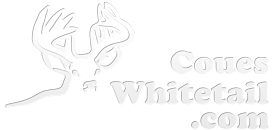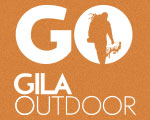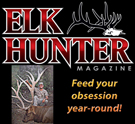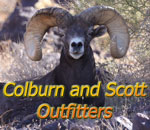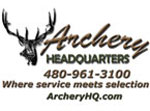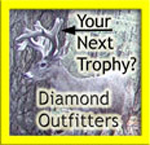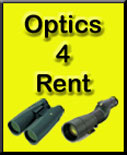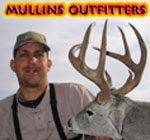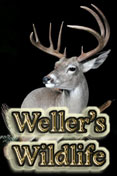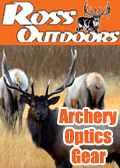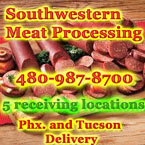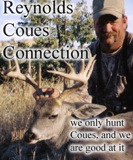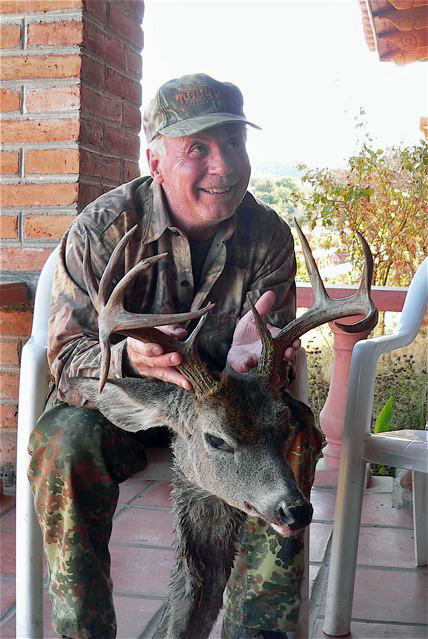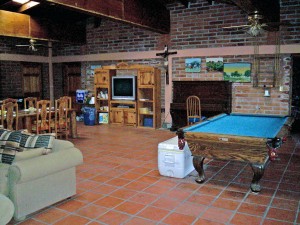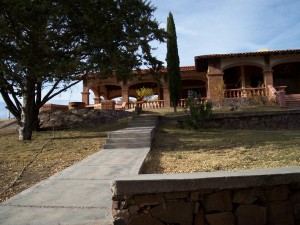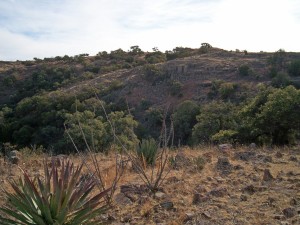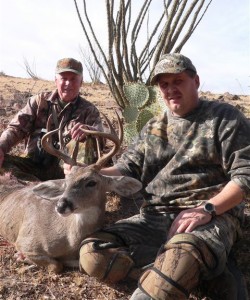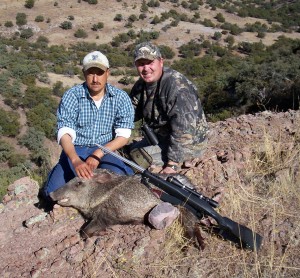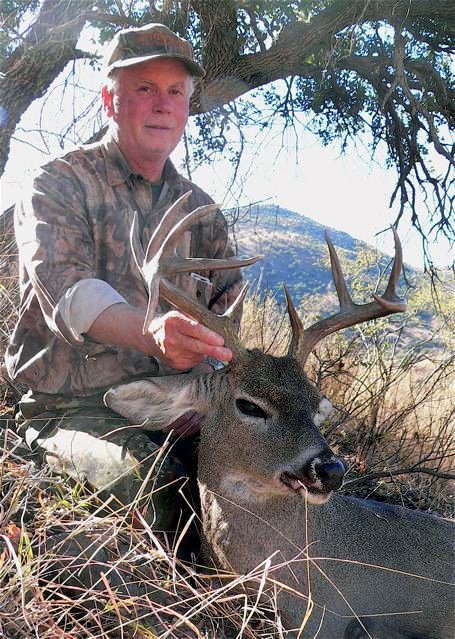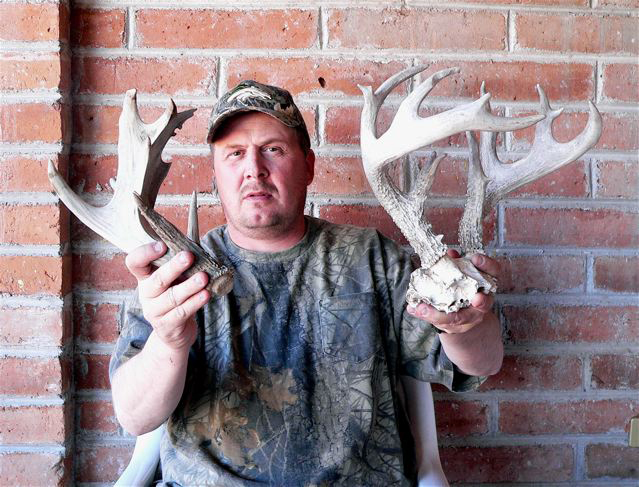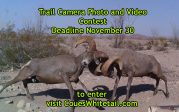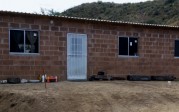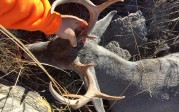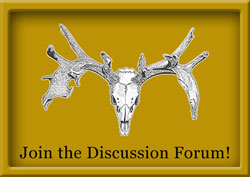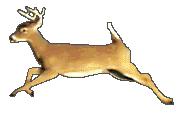Hunt Stories
Mexico Coues Deer Adventure
Note: this article originally appeared in Western Hunter Magazine. Thanks to Chris Denham, editor of Western Hunter, for allowing me to re-publish the article here.
Cola Blanca Outfitters is a sponsor of CouesWhitetail.com. To learn more about booking a hunt with them, please visit their website. You can also read another hunt story from a previous year by clicking here.
“Insane Coues Deer Hunter Syndrome”
Half a mile away across a huge canyon on the sunny side of a mountain stood the biggest Coues deer buck that I had seen in more than 30 years of hunting. Bright morning sunlight reflected off his massive antlers, lighting them up like a ghostly bone white apparition. He was huge! He was magnificent! He was the reason that I had come to Mexico.
I was hunting with Dan Bishop of Cola Blanca Outfitters on a remote ranch in Sonora, Mexico. In addition to being an extraordinary outfitter and hunting guide, Dan operates Bishop Taxidermy in Tucson, Arizona, which is renowned with both hunters and the television and motion picture industry for producing some of the most creative and life-like mounts that you will ever see. His taxidermy work is wildlife artistry in every sense of the word.
After a long day of travel meandering our way through the border checkpoints and then the captivating Mexican countryside, we reached our destination. The ranch house was incredible, situated on a huge ranch that had been built to accommodate visiting hunters. A main dining hall with a king sized fireplace and comfortable sofas was surrounded by a number of bedrooms, each with its own fireplace. The luxury of our accommodations seemed unbelievable in such a remote location. The ranch owner told us it had taken a year and a half to complete construction of the ranch house and guest facility. Every Spanish paver tile, every beam for the vaulted ceiling, every red cinder block and every cement truck had come in over a road so bad that we spent the last fourteen miles of the trip in 4 wheel high. After a delicious dinner of homemade tamales with rice and beans and salad, we all slept soundly through the night.
During our first day a field, we saw more than thirty deer, four of them bucks that would have been fine in the U.S. but were not considered “shooters” in Mexico. Any buck scoring less than 100 points is usually passed up until the end of the hunt. We spent most of the day glassing one canyon after another with our binoculars. Dan Bishop hunts with Leica 12 x 50 binoculars mounted on a sturdy tripod and he spotted about three times as many deer as my hunting partner and I did with our 10 x 40 Zeiss and 10 x 42 Swarvoski binoculars. Part of the difference was his skill, part was his more powerful binoculars and part was his rock steady tripod. He was prepared to spot deer at long distances and to quickly evaluate them as necessary with a tripod mounted spotting scope.
The second morning, we came on three bucks at the head of a canyon just after daylight. There was a small two point, a very good three point, and a real trophy buck hidden in the shadow of a rock cliff. At first glance he looked to be about a 108″ to 110″ typical with wide spread antlers, great mass, long main beams and high tines. He was the Holy Grail for Coues deer hunters and certainly the best buck I had ever seen in the field up to this point in time. We had agreed that Eric, one of my best friends, hunting partner and son-in-law, would shoot first and he did, making a beautiful running shot at about 180 yards that catapulted a buck end over end. But at his shot, the very good three-point had gone down and the huge buck was still standing. At that moment, Dan and I did not realize that Eric could not see the big buck from his position. He correctly followed Dan’s direction to shoot the big one, which was the big three point in his field of vision.
Dan Bishop was about to blow a gasket! He and I could clearly see the sensational big buck. I had the cross hairs on him twice but did not fire because Eric had arranged his hunt to take two bucks if the opportunity presented itself. Dan was hollering for somebody to shoot the big buck and I was waiting for Eric to shoot and finally the best Coues buck I had ever seen got up ran over a ridge and was gone. Eric wasn’t able to see him until the last second and then it was too late.
I went over the ridge after him but we never saw him again. We had traveled almost 1000 miles, entered a foreign country, had a good shot at one of the best Coues bucks we will ever see and he got away clean in the confusion of the moment. Had I known that Eric couldn’t see him from his position, I would have blasted that buck in a heartbeat. Coues deer hunting is usually like that with days of relentless effort punctuated by sudden moments of opportunity that are measured in seconds.
When you take a Coues deer buck, you have recorded a milestone in your hunting career. The little gray ghosts of northern Mexico and the southwest United States are the biggest trophies in the deer hunting world and the most challenging. He is small in size and a master of stealth and escape. Shots are usually long and frequently difficult or very quick with no time to get set. The country he lives in is huge, making it a challenge just to spot a good buck. There are steep mountainsides that require a three-point stance and plunging canyons that look like the heart attack you’re hoping to avoid. Sharp, loose shale covers the ground beneath tall yellow gramma grass. There are thorns on most of the fauna and if you slip and slide on one of these slopes, your body will accumulate a memorable collection of sharp, sticky things.
Shouts of joy and a call for the camera pack brought me back to reality. We had a great buck down, Eric’s first Coues deer buck, and it was time for celebration. I cleared the live round from my rifle’s chamber, slung the backpack full of camera gear over my shoulder and started across the canyon. The buck was a beauty with long beams and tines and good mass, the kind of buck that most hunters will never see, much less harvest. I was thrilled for Eric and extremely proud of the great shot he had made. We took lots of pictures and some videotape and then hauled this very good buck down into the canyon and all the way up the other side.
We drank some water, hung the buck in a tree and went on hunting for the rest of the day. For the record, Dan never said a cross word about me not shooting that big buck. He had every right to express his feelings and I would not have blamed him had he chosen to do so, but he just smiled and said we would find another good one.
That night’s dinner featured thick, barbequed pork steaks cooked on a open grill, huge baked potatoes, fresh salad and warm tortillas accompanied by bottled water, cold milk and canned sodas. We all devoured this delicious meal and then flopped briefly on the sofas in front a blazing fire before drifting off to bed. Dinner was a feast every night. I have never eaten so well on an outfitted hunt.
On the morning of the third day, we went east of the ranch to a vast canyon system and spent the morning glassing. We saw two very nice bucks that would have been shot on sight in the States, but we passed them up. At this point in the hunt, Eric and I were still holding out for a “book” class deer. About noon, a small herd of javelina appeared across one canyon and Eric decided to take one. He made a terrific, very long one-shot kill across the canyon and that turned out to be the easy part. It took an hour to climb down, retrieve the pig and climb back out of the canyon.
About one o’clock, we headed back west to a high vantage point that overlooked a huge basin surrounded by some low hills. A few minutes after we started glassing, Dan said he had spotted a good buck. After some direction from him, I was astounded to see that the deer was actually on the horizon about a mile away. We looked at him through the spotting scope, guessed that he was well in excess of 100 points, and decided to go after him. With Dan in the lead, we stalked as close as possible. His Leica rangefinder registered 426 yards, the wind was gusting from left to right and I would be shooting slightly uphill. I got into the best shooting position possible on a steep down slope location.
It was a moment of truth and I was not comfortable with the circumstances. Two days before we left for the hunt, my .270 Weatherby rifle started spraying bullets all over the target. I quickly checked the rifle and scope, but found nothing. It was after I returned from the hunt that I learned the rifle had been knocked off the back of my ATV and fallen onto the concrete floor of our garage. Out of time, I turned to my alternative rifle chambered for .270 Winchester with a 3 x 9 Leupold scope, sighted it in for a 300 yard zero. The Mexican gun permits processed months earlier allowed us to designate two rifles by description and serial number and that is what you are limited to when crossing the border.
The buck was lying down in a small depression and we needed him to stand up before shooting. With the distance, wind, substitute rifle and awkward shooting position, I was concerned about wounding the buck and losing him. When he stood up, I put the horizontal cross hair right on the top of his shoulder, held about ten inches to the left to compensate for the wind and squeezed the trigger. The bullet passed just over his back. I shot again with a little lower point of aim and this time it seemed that the bullet was so close that it might have cut the hair on the top of his back. He circled around a small tree and when he quartered toward me, I lowered the point of aim again, shot, and the wind took the bullet just barely off to his right. Any one of these shots was within inches of killing him. The buck finally took off and the last I saw of him was his white butt bobbing up and down as he hightailed it around a small mountain.
The next day, we found a very good buck bedded on a bare hillside about 500 yards away. A cross wind was blowing hard again and my confidence was not up to taking the shot. We made a long stalk but just before getting in position for a shot, we jumped a small herd of cows out of a draw and they stampeded right toward the buck. He responded by running over a ridge and disappearing. At this point, I had embarrassed myself by missing out on three shooting opportunities at 100 point plus bucks in as many days. We had only one day left and it was not looking good.
Eric decided to hunt north of the ranch on the last day, so Dan, Luis and I headed out to a large canyon system before daylight. We crept onto a vantage point and immediately started seeing deer on the opposite mountainside. Dan saw the big buck first. There were two other smaller bucks with him and about ten does scattered around the same area. Despite the half-mile distance, I could see his antlers without my binoculars. That alone tells you that we were looking at a real trophy buck. I asked Dan if we could get to a low ridge about 400 yards from the deer. Dan left Luis with the spotting scope and we started closing the distance.
Dan maneuvered us through some light brush and open areas on a circuitous approach and finally we crawled the last few yards. The three bucks were still together and had gradually moved toward us during our stalk. Dan’s rangefinder pegged the distance at 356 yards. I borrowed his tripod, improvised by putting a ham and cheese sandwich in a baggy on top of it to cushion my rifle stock and lined up the shot. Thankfully, there was no wind. I placed the crosshairs on the buck’s shoulder midway between back and brisket, waited for one of the smaller bucks to walk out of the way and squeezed off what was likely to be my last shot on this hunt. I lost sight of the buck in the recoil but the “thwack” of a solid hit was a sound of relief. Looking through his binoculars, Dan said the buck was down in the tall yellow gramma grass. We waited for a bit to see if I needed to shoot again but there was no sign of the deer.
It took a long time to cross the big canyon and during most of it, we were out of sight from where the buck went down. After a difficult trek of descending, side hilling and then climbing through the loose shale, we got to within a hundred yards of our objective. We stopped for a breather, left our coats and packs behind, and started the final approach. I was out front with the rifle and Dan was just behind and to my left. We slowly closed the distance, ready for a quick shot if necessary, but we found nothing. Step by step, we gradually pushed through the long grass but there was no deer and no blood. We eased slightly downhill to a small draw that split down the mountain on our left and right. Carefully, slowly, we checked the area to the left that was more open. Turning back to the right, rifle ready and thumb on the safety, I started to ease down the draw as Dan headed uphill to a better vantage point.
I had gone only a few steps when I heard rocks clattering and rolling ahead of me. Hurrying forward, I glimpsed the buck lunging down a deer trail about twenty yards in front of me. He was down when I came up on him but lunged up again as I approached. I quickly raised my rifle and put him down for good. My first bullet had broken both his shoulders and passed completely through his chest, grazing his heart. How he managed to get up and go as far as he did was unbelievable.
I stood there looking at this incredible buck of a lifetime and realized how lucky I was to get him. At age 64, the terrain was more of a challenge for me than it was thirty years ago. Success brought feelings of relief and jubilation. I was also filled with respect and admiration for this king of the mountains who now belonged to me. He will always have a place of honor and be admired by all who see his magnificent profile mounted and preserved by the artistry of Dan Bishop.
My buck had a gross score of 119 4/8″ and he was everything I had dreamed of. Eric’s buck was also sensational and we will both have to go back to Mexico if we ever hope to do better. We shared a great trip and came home with great memories, new friends and great trophies. It truly doesn’t get any better.
It is hard to imagine doing as well or better than we did on this hunt. But Eric and I both suffer from a disease known as “ICDHS” or “Insane Coues Deer Hunter Syndrome.” I should warn you that this condition is very contagious. We have already decided that we will go back to Mexico again next year with Cola Blanca Outfitters. Perhaps the big buck that got away from Eric and me will be waiting for us. I can’t wait!
EQUIPMENT NOTES:
Here are some suggestions that will help you prepare for a successful Coues Deer hunt in Mexico:
1) BOOTS
The ideal boots would be all leather, 8” to 10” lace-to-toe design with an aggressive sole for traction and a shock-absorbing element to cushion your feet on the sharp, rocky terrain. Cabela’s Alaska Hunter boots are an optimum choice.
2) BINOCULARS
The best all around glass currently available may be the 12 x 50 Leica Ultravid, which provides sufficient magnification, a wide field of view, high resolution and a very bright image. These binoculars can be hand held for a quick look or mounted on a tripod. The Swarovski 15 x 56 SLC binoculars are ideal for this type of hunting but they are more specialized, requiring a tripod for effective use. Any binoculars will require a steady tripod for extended viewing. For cost effective alternatives to the very expensive European models, look at the Pentex 12.5 x 50 DFC SP, Burris 12 x 50 Signature Select or Cabela’s 12 x 50 Alaskan Guide binoculars
3) SCOPES
A power range of at least 4.5 x 14 up to 6 x 24 is ideal depending on your preference. An objective lens between 40mm and 50mm is sufficient. The real issue is that all the lenses must be multi-coated to produce the crystal clear image that you will need for range shooting. I personally like the reliability of Leupold scopes but my next purchase may be a 30mm Burris Euro Diamond or Black Diamond scope for about half the cost of similar European models.
4) RIFLES
Your rifle should consistently shoot minute of angle or less with your selected ammunition and the weight of the rifle must be such that you can carry it all day in the field. Among currently available factory-built rifles, Weatherby markets their incredible Vanguard SUB-MOA rifles that are selected in the same manner as were the original 1 of 1000 Winchester’s – by test firing at the factory. If you select a factory rifle, be sure have a trigger job done by a professional gunsmith to adjust the trigger and insure the fire control system is fully functional; that means the trigger, sear engagement and safety catch.
If money is no object, you can order the custom rifle of your dreams from any number of reputable firms. Christensen Arms Ultra-Light Carbon Barreled Rifles are a dream to carry and are very accurate. If money is an issue and you really want a custom, tack-driving rifle, check out one from H-S Precision; it will come with a guarantee of 3 shots at ½ MOA at 100 yards for .30 caliber or less at what is a bargain price for this degree of accuracy.
5) CALIBERS – There are three levels of power to consider here:
A) A .270 or .30-06 with high velocity loads from Federal or Hornady or a similar caliber with your fastest hand loads that still maintain MOA accuracy or less. These rifles can be lighter and produce less recoil than the magnums.
B) Any of the .270 or 7mm Magnums will shoot flatter, hit harder, weigh more and produce more recoil than the standard .270 and .30-06 class of cartridges using high velocity ammunition.
C) Any of the .300 magnums. This is probably the most popular choice among experienced long-range riflemen. The .300 magnums combine the elements of accuracy, high velocity, bullet weight, frontal diameter and high energy transfer at the target.
6) MAKING A SELECTION
Ideally, in order to avoid losing a trophy buck shot at long range, you need to knock the animal down. Penetration alone is not enough to insure recovery because even a mortally hit buck can travel a long distance in the time it takes you to reach him in difficult terrain. If you can carry and shoot a .300 magnum; it’s your best choice. If less recoil helps, go the .270 or 7mm magnums or consider the installation of a muzzle brake to reduce recoil. The standard .270 or .30-06’s class of cartridges can work but realize that you will be at a tactical disadvantage with respect to trajectory, wind drift and energy delivery compared the magnum calibers.
7) BULLETS
Aerodynamic, accurate and non-reinforced for quick expansion. Minimum standard deviation in shot to shot velocity and MOA accuracy are both basic requirements in your choice of ammunition. Like most mountain game smaller than elk, these small deer don’t require the use of heavy jacketed or reinforced bullets.
8) PRACTICE
Forget the 100-yard stuff. You need to shoot at 300, 400 and 500 yards in actual practice until your confidence and comfort level is automatic. Also, practice in the adverse conditions of heat, cold and wind. If you can, practice shooting uphill and downhill.
9) PHYSICAL CONDITIONING
You will need strength, stamina and flexibility to traverse this terrain. Think of it as sheep hunting. Climbing the mountains and in and out of deep canyons requires brute strength. Hunting hard day after day requires stamina. Flexibility will help you maintain your balance on steep slopes and uneven footing.
Tagged 110-120", Cola Blanca Outfitters, droptine, mexico
